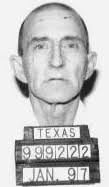Scott Mansfield Murders Sara Robles In Florida
Scott Mansfield was sentenced to death by the State of Florida for the murder of Sara Robles
According to court documents Scott Mansfield was seen leaving a bar with Sara Robles and the young woman would later be sexually assaulted, tortured and murdered
Scott Mansfield would be arrested, convicted and sentenced to death
Scott Mansfield Photos

Scott Mansfield Now
DC Number: 124460
Name: MANSFIELD, SCOTT
Race: WHITE
Sex: MALE
Birth Date: 05/24/1961
Initial Receipt Date: 02/02/1998
Current Facility: UNION C.I.
Current Custody: MAXIMUM
Current Release Date: DEATH SENTENCE
Scott Mansfield Case
On October 15, 1995, at approximately 3:00 a.m., Sara Robles was brutally murdered. Her body was discovered later that morning, lying adjacent to a Winn–Dixie grocery store in Kissimmee, Florida. Her breasts and pelvic area had been mutilated, and further examination revealed that her nipples had been cut off, as well as portions of her labia minora, labia majora, and clitoris. Robles was found wearing a watch that was cracked and stopped at 3:00 a.m. Food stamps were strewn around her body, and a pager was found less than eight feet away. The police also found two gold chains: one by the pager, and the other on Robles’ body.
The police investigation that followed determined that Robles and a male matching Mansfield’s description had been at a nearby bar called Rosie’s Pub, located in the same shopping plaza as the Winn–Dixie, in the early morning hours on the day of the murder. The police interviewed a bartender at Rosie’s Pub, who indicated that Robles, Mansfield, and a third individual, William Finneran, left the bar shortly after 2:00 a.m. The police also interviewed Finneran, who testified at trial that he left the bar at the same time as Mansfield and Robles and that he last saw the two just outside the Winn–Dixie before they entered the store.
The police discovered that the pager found at the crime scene belonged to Mansfield. Detectives from the Kissimmee Police Department went to Mansfield’s residence on the evening of October 15 to question him. Mansfield agreed to be interviewed by the detectives at the police station. The interrogation was videotaped by the police.
The videotaped interrogation, which was played to the jury at trial over Mansfield’s objection, is at the core of this appeal. The interrogation took place on the night of October 15, 1995, the date of the murder. Once at the police station, Mansfield was interrogated by a total of three officers. It is undisputed that the officers never informed Mansfield of his Miranda rights prior to or during the interrogation. Mansfield I, 758 So.2d at 644.
The vast majority of the approximately two-hour-long interrogation consisted of the officers asking Mansfield about where he went—and with whom—after leaving Rosie’s Pub on the morning of the murder. Mansfield initially said that he went directly home by himself, but later, after being confronted with evidence placing him at the Winn–Dixie with the victim shortly before her death, repeatedly claimed that he was drunk at the time and could not remember what had happened or where he had gone. Mansfield gave similar denials when confronted with other evidence. When the officers told Mansfield that they had found his pager (because it had been discovered near Robles’ body next to the Winn–Dixie), Mansfield claimed that he must have lost it at the bar or it must have been stolen.
The interrogation also contained a number of exchanges in which the officers accused Mansfield of committing this gruesome murder. The interrogation did not contain a confession, however. Throughout the interrogation, Mansfield consistently denied the officers’ accusations.
During the course of the interrogation, the police received further evidence placing Scott Mansfield at the scene of the crime. Juanita Roberson, who was working at the Winn–Dixie on the morning of the murder, identified Mansfield in a photo lineup. In particular, she identified him as the man she twice saw with Robles in the early morning hours of October 15—first inside the Winn–Dixie, and then outside of the store at approximately 3:00 a.m.
At the close of the interrogation, the police arrested Scott Mansfield and took into evidence a ring with a “grim reaper” design that Mansfield was wearing. The next day, Mansfield’s brother Charles called the police and alerted them to items found in Mansfield’s room, which included food stamps, a knife, clothing, and a towel.
At trial, the State’s medical examiner, Dr. Julie Martin, testified that Robles died of asphyxia due to airway compression as a result of blunt force trauma to the neck. Dr. Martin opined that the murderer likely strangled Robles with one hand, while using the other hand or an object, such as Scott Mansfield’s ring, to press down on her lower neck, causing the trachea to collapse. Dr. Martin concluded that Robles was alive but likely unconscious when parts of her genitalia were excised by a sharp object.
The jury found Scott Mansfield guilty of first-degree murder. Mansfield I, 758 So.2d at 642. Following the penalty phase, the jury unanimously recommended the death penalty. Id. The trial court followed the recommendation and sentenced Mansfield to death. Id. In support of the death sentence, the trial judge found two aggravating circumstances. First, the crime was especially heinous, atrocious, or cruel, and second, the crime occurred during the commission of, or an attempt to commit, a sexual battery. Id. The trial court found no statutory mitigators and five nonstatutory mitigators. Id. The trial court afforded very little weight to the following three mitigators: (1) the defendant displayed good conduct during trial; (2) the defendant is an alcoholic; and (3) the defendant’s mother was an alcoholic during his childhood. Id. However, the court afforded some weight to the other two mitigators: (1) the defendant had a poor upbringing and dysfunctional family; and (2) the defendant suffers from a brain injury due to head trauma and alcoholism. I














